Belly fat is not only uncomfortable but dangerous and linked to serious diseases such as type 2 diabetes and heart disease. "The issue is health, not cosmetics," bariatric surgeon Dr. Garth Davis tells Houston Methodist. "The presence of visceral fat is a good predictor of the development of chronic metabolic disease, whether it's hypertension, heart disease or diabetes." If belly fat is bothering you, there are things you can do to help get rid of it. Here are ten proven ways to get rid of abdominal fat at home.
1. Eat More Fiber

Eating more soluble fiber from vegetables, fruit, and beans can help get rid of belly fat, researchers from Wake Forest Baptist Medical Center discovered. "There is mounting evidence that eating more soluble fiber and increasing exercise reduces visceral or belly fat, although we still don't know how it works," says Kristen Hairston, MD, assistant professor of internal medicine at Wake Forest Baptist and lead researcher on the study. "Although the fiber-obesity relationship has been extensively studied, the relationship between fiber and specific fat deposits has not.”
2. Avoid Added Sugars

Added sugars, such as those in soda, can encourage belly fat accumulation. Switch to water or tea instead. “When the body experiences inflammation and stress, the preferred storage site for fat is in and around the belly,” Brenda Rea, MD, DrPH, PT, RD, tells Loma Linda University Health.
3. Cardio For 30 Minutes

Try to get at least 30 minutes of brisk cardio a day. “Decreasing belly fat requires cardiovascular exercise, strength training, and a healthy diet,” Deborah Kurzrock, RD, tells Sutter Health.
“Experts recommend that individuals exercise for at least 30 minutes a day; reduce portion sizes and caloric intake; and strengthen and tone muscles to increase metabolic functioning.”
RELATED: 15 Ways to Lose 3 Pounds Per Week by Walking
4. Watch the Carbs

Avoid ultra-processed foods, which tend to be high in refined carbohydrates. “The combination of both fat and sugar intake can really be problematic,” endocrinologist Samantha Harris, MD, tells Scripps Health. “Focusing on whole and unprocessed foods with limited added sugars and adding more produce can be helpful. Carbs should be eaten in moderation and, for some, considered mostly as a garnish or dessert.”
5. Get Off the Couch

Studies show people who sit all day tend to accumulate fat around their middle. “Research has linked sitting for long periods of time with a number of health concerns,” Edward R. Laskowski, MD, tells the Mayo Clinic. “They include obesity and a cluster of conditions — increased blood pressure, high blood sugar, excess body fat around the waist, and unhealthy cholesterol levels — that make up metabolic syndrome.”
6. Eat More Protein

“Eating lean protein with meals and snacks is a good way to increase satiety and decrease total caloric intake,” Kurzrock says. “Studies show that people who eat protein with breakfast will eat fewer calories throughout the day than those who do not consume protein with their breakfast.”
RELATED: This Is Exactly How to Lose Body Fat This Year
7. Manage Stress

Stress can, unfortunately, lead to belly fat accumulation. “Reduce your stress. When we’re stressed, our adrenal glands produce cortisol, a stress hormone,” says Kaiser Permanente. “Cortisol stimulates our fight or flight response, which in turn stimulates our appetite to fuel our bodies to combat the stress. This leads to higher insulin levels in our bodies and a craving for sugary, fatty foods.”
8. Lift Weights

Experts say that lifting weights can also help blast belly fat. “To really lose weight, aim for 300 minutes of aerobic exercise per week,” says Kaiser Permanente. “Low-intensity activities, such as walking, biking, swimming or jogging, can lead to great results. Weightlifting builds muscle, and muscles burn more calories than fat.”
9. Get Good Sleep

Get at least 7 hours of good quality sleep every night. “Getting the right amount of shut-eye helps,” according to Houston Methodist. “In one study, people who got 6 to 7 hours of sleep per night gained less visceral fat over 5 years compared to those who slept 5 or fewer hours per night or 8 or more hours per night.”
RELATED: How I Lost 40 Pounds in 3 Months by Making These Simple Dietary Changes
10. Make Sustainable Changes

Don’t look for a “quick fix”—the best way to lose belly fat and keep it off is to make long-term healthy habits a part of your lifestyle. “If anything that’s done to help someone lose weight, whether it’s an eating plan, an exercise program or a medication, is stopped or taken away, the weight almost always comes back,” Dr. Harris tells Scripps Health.
💪🔥Body Booster: Eat more fiber from fruit and vegetables to help blast belly fat. And if you enjoyed this article, take advantage of these 15 Quick Ways to Lose Body Fat Percentage in a Week.








 Olive OilShutterstock
Olive OilShutterstock It's Now Part Of My LifeShutterstock
It's Now Part Of My LifeShutterstock Beans and Lentils: The Hunger-Fighting Fiber ChampionsShutterstock
Beans and Lentils: The Hunger-Fighting Fiber ChampionsShutterstock SalmonShutterstock
SalmonShutterstock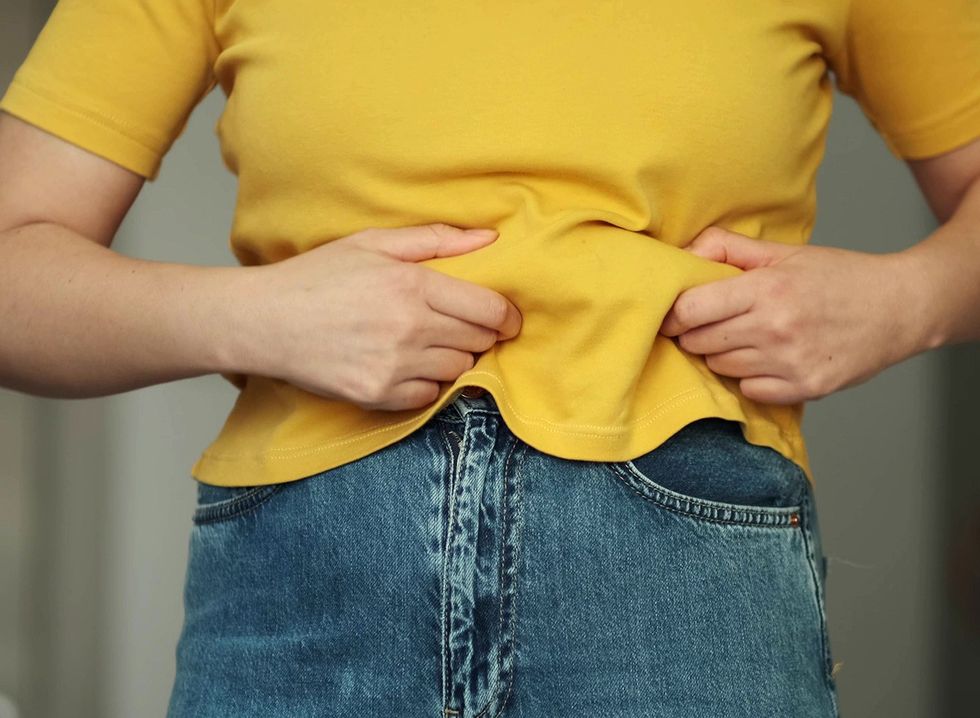 12 Surefire Ways to Lose Abdominal Fat, Say ExpertsShutterstock
12 Surefire Ways to Lose Abdominal Fat, Say ExpertsShutterstock Chronic StressShutterstock
Chronic StressShutterstock Shutterstock
Shutterstock Remember:Shutterstock
Remember:Shutterstock






 Solution #1: Increase Protein IntakeShutterstock
Solution #1: Increase Protein IntakeShutterstock 3. Fatty FishShutterstock
3. Fatty FishShutterstock 3. EggsShutterstock
3. EggsShutterstock 45. Edamame (boiled): 44 caloriesShutterstock
45. Edamame (boiled): 44 caloriesShutterstock Green TeaShutterstock
Green TeaShutterstock AvocadoShutterstock
AvocadoShutterstock BlueberriesShutterstock
BlueberriesShutterstock 29. AlmondsShutterstock
29. AlmondsShutterstock Shutterstock
Shutterstock 7. BroccoliShutterstock
7. BroccoliShutterstock Shutterstock
Shutterstock Soda and Sugary DrinksShutterstock
Soda and Sugary DrinksShutterstock 8. Oatmeal (5-6g protein per 1/2 cup dry)Shutterstock
8. Oatmeal (5-6g protein per 1/2 cup dry)Shutterstock 23. ChickpeasShutterstock
23. ChickpeasShutterstock 3. Drink More WaterShutterstock
3. Drink More WaterShutterstock
 1. Hydrate the Right WayShutterstock
1. Hydrate the Right WayShutterstock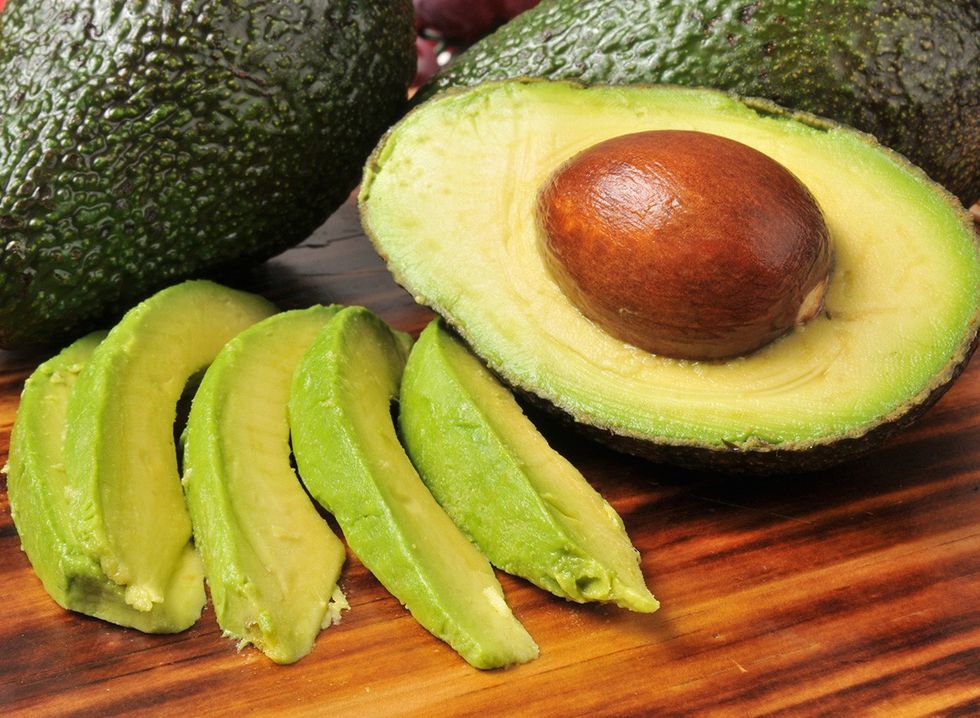 AvocadoShutterstock
AvocadoShutterstock Leafy GreensShutterstock
Leafy GreensShutterstock EggsShutterstock
EggsShutterstock Spice Up Your Food with Healthy CondimentsShutterstock
Spice Up Your Food with Healthy CondimentsShutterstock Shutterstock
Shutterstock Shutterstock
Shutterstock Nuts and SeedsShutterstock
Nuts and SeedsShutterstock Regular YogurtShutterstock
Regular YogurtShutterstock Kevin’s Natural Foods Cilantro Lime ChickenShutterstock
Kevin’s Natural Foods Cilantro Lime ChickenShutterstock Amp Up Your Protein IntakeShutterstock
Amp Up Your Protein IntakeShutterstock Shutterstock
Shutterstock Prebiotic Foods: OatsShutterstock
Prebiotic Foods: OatsShutterstock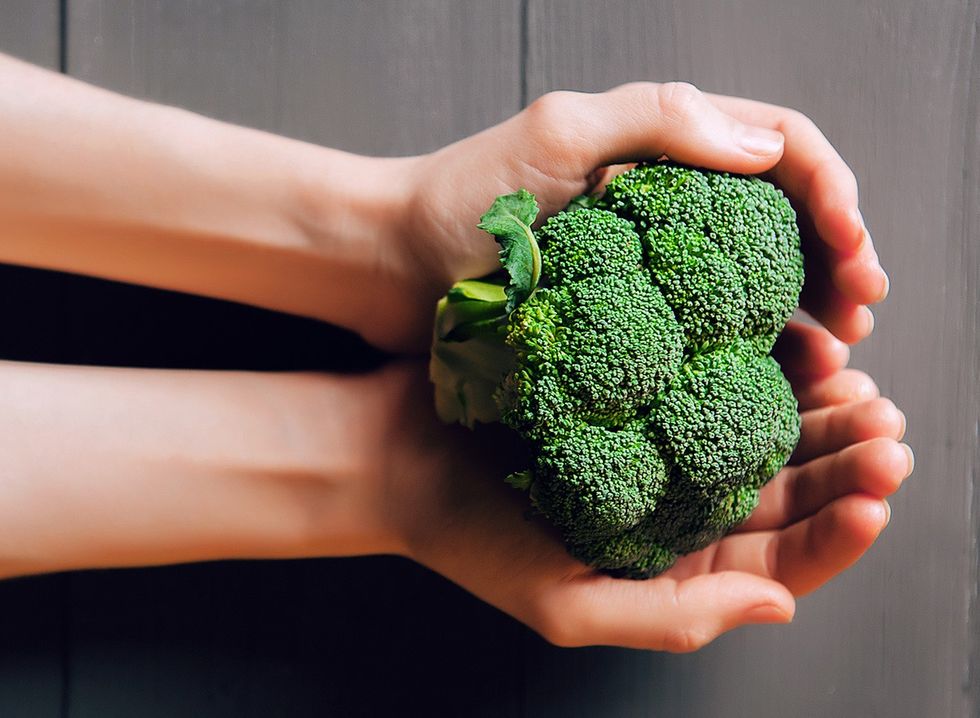 Shutterstock
Shutterstock Shutterstock
Shutterstock 5. Green TeaShutterstock
5. Green TeaShutterstock Shutterstock
Shutterstock Step Five: Stay ConsistentShutterstock
Step Five: Stay ConsistentShutterstock


 Shutterstock
Shutterstock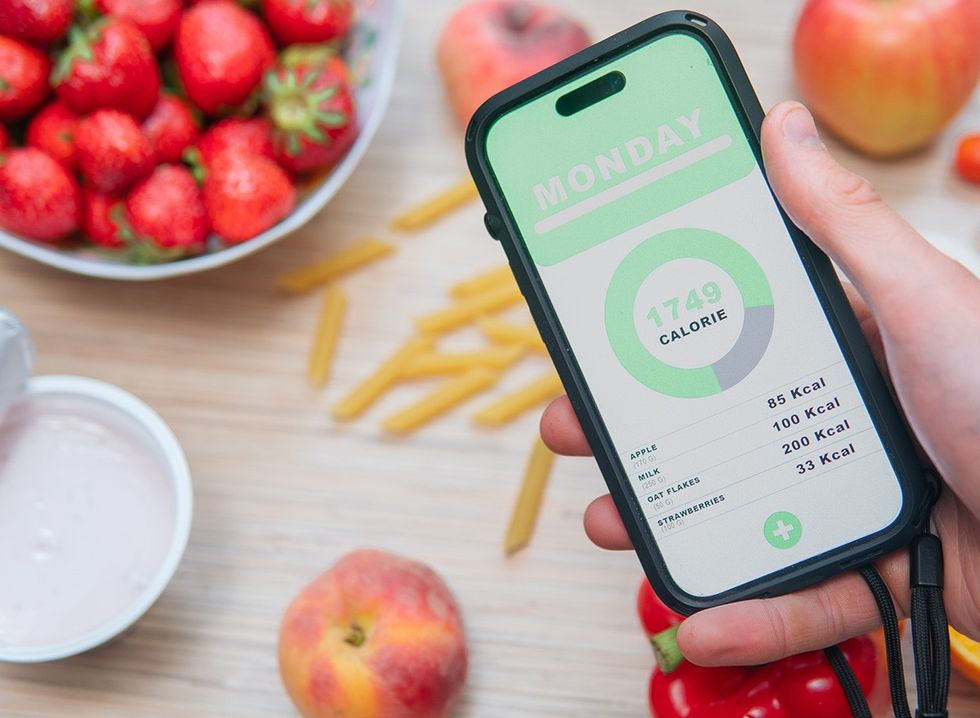 Shutterstock
Shutterstock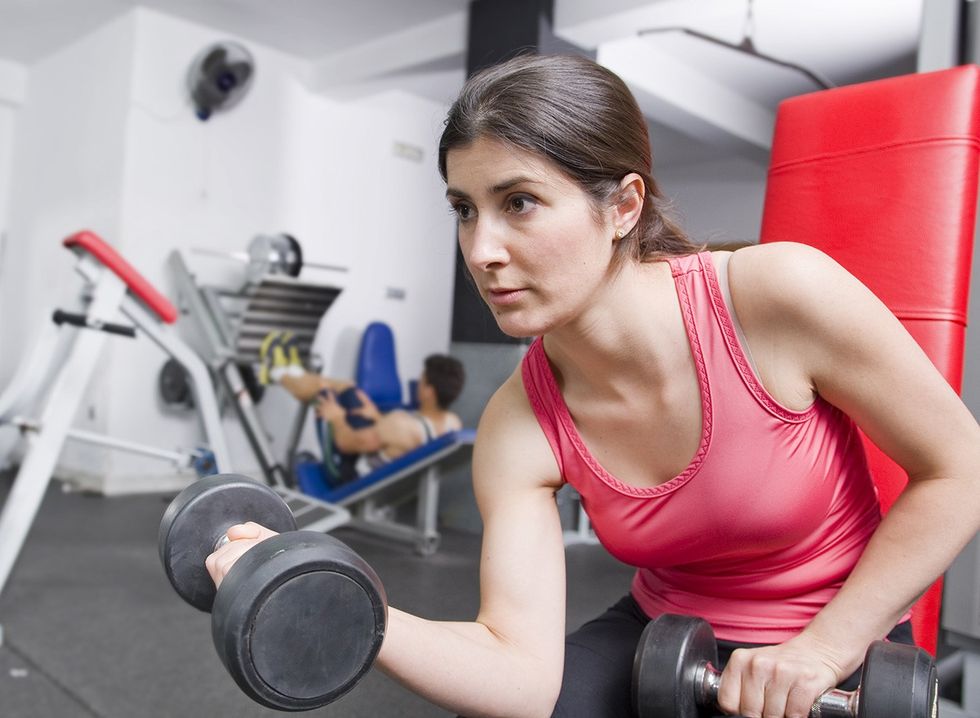 Shutterstock
Shutterstock Shutterstock
Shutterstock Shutterstock
Shutterstock

 I'm a Nutritionist and These 9 High-Protein Snacks Keep My Clients Full While Losing 50 Pounds
I'm a Nutritionist and These 9 High-Protein Snacks Keep My Clients Full While Losing 50 Pounds
 2. Processed FoodsShutterstock
2. Processed FoodsShutterstock Shutterstock
Shutterstock Shutterstock/Prostock-studio
Shutterstock/Prostock-studio Shutterstock
Shutterstock Pro TipsShutterstock
Pro TipsShutterstock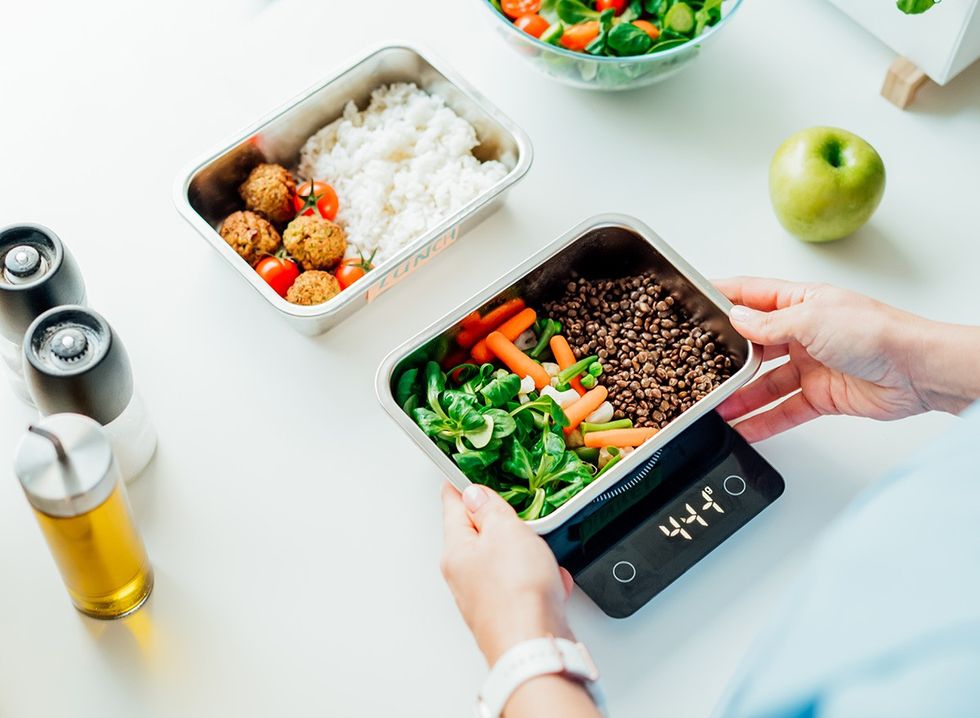 Shutterstock
Shutterstock Shutterstock
Shutterstock Shutterstock
Shutterstock Shutterstock
Shutterstock Don’t Drink as Much AlcoholShutterstock
Don’t Drink as Much AlcoholShutterstock Most Women on GLP-1s Are Making a Few Common MistakesShutterstock
Most Women on GLP-1s Are Making a Few Common MistakesShutterstock Soda and Sugary DrinksShutterstock
Soda and Sugary DrinksShutterstock Shutterstock
Shutterstock Eat BreakfastShutterstock
Eat BreakfastShutterstock And Improve Insulin SensitivityShutterstock
And Improve Insulin SensitivityShutterstock Shutterstock
Shutterstock The Drugs Mimic the GLP-1 Hormone Naturally Produced by the BodyShutterstock
The Drugs Mimic the GLP-1 Hormone Naturally Produced by the BodyShutterstock 3. Deep-Fried ItemsShutterstock
3. Deep-Fried ItemsShutterstock